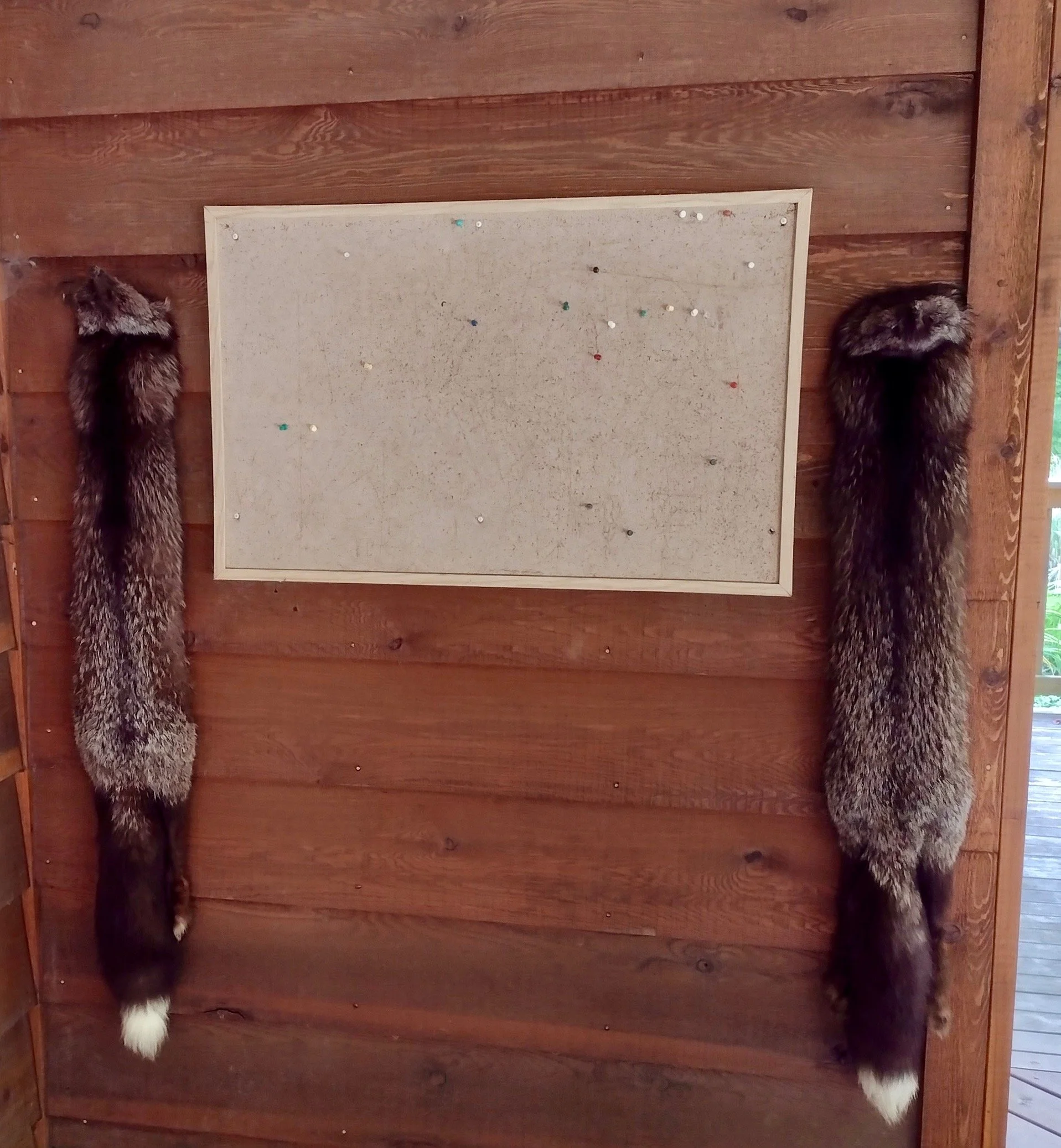Into the Woods with Curio: Fox Furs
Doug Smith
Did you notice the two furs on display on the dining room porch this past summer? Here is their story:
These are fox furs, as you may have already guessed by the overall length and shape of the animal, along with the thickness of the fur and the diagnostic white tip on the tail. You can also tell by the face, of course, as these furs include the entire head, which is the norm for prepared furs such as these, though it’s not very appealing.
But why aren’t these furs red in colour? They ARE from the species we know as the red fox, (Vulpes vulpes). It is the most common fox species in Ontario, and the only species of fox you will see in Muskoka and at Beacon. There are a number of natural variations of fur colouration in the red fox. One is known as a cross-fox, called that because of the cross pattern of darker fur running down its back and then crossing at the shoulder. There are also silver foxes, which have a dark undercoat and silver tips on the fur, much like these two furs. A darker variation is sometime called a black fox. None of these different coloured foxes are commonly seen.
However, these two furs are from foxes raised on a ranch, maybe as long ago as the 1920s, which means they could be almost 100 years old. Back then foxes were ‘farmed’ for their fur, and their furs made into coats, wraps and other ‘accessories’. Fox farmers discovered that through selective breeding they could get different colours of fur, including many variations of silver, black, and even a lighter version that was pale blue in colour. Fox fur was in fashion back then, with women wearing fox-fur coats and sometimes just a single fox around the neck, known as a ‘stole’. By the 1950s and 60s fox fur, and furs in general went out of fashion, mainly because there was a lot of protest about how inhumane it was to raise foxes, (and mink and other fur bearers) in cages, just for their fur. But many of those old furs are still around, including these two.
Unfortunately, fur coats are still in vogue in some countries, so wild foxes are still trapped for their fur. November is when the trapping season begins, because the fur is ‘prime’ at the beginning of the winter. That’s because foxes need a coat of thick fur to survive in the cold. Come spring they will shed their long fur, and look very different with their short summer fur coat. Whether their fur coat is short, or grown long for winter, they still need it. We don’t. We can make our clothing from such things as cotton, wool, alpaca and synthetic fibres, none of which require an animal to give its life for our benefit.
There was a time an animal sacrifice was needed, when Adam and Eve first sinned. And countless animal sacrifices were made since that time, to pay for our sins, until the Lord Jesus offered His life as the ultimate sacrifice for sin. Now nothing is required from us, except to believe… ‘Believe on the Lord Jesus Christ, and you will be saved…’ (Acts 16:31).
